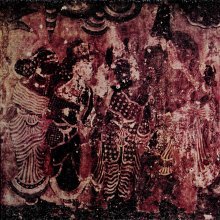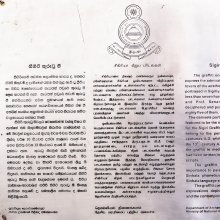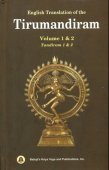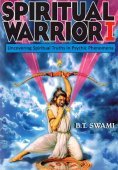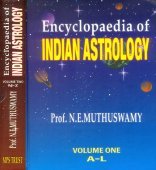Lover: 2 definitions
Introduction:
Lover means something in Hinduism, Sanskrit, the history of ancient India. If you want to know the exact meaning, history, etymology or English translation of this term then check out the descriptions on this page. Add your comment or reference to a book if you want to contribute to this summary article.
Images (photo gallery)
In Hinduism
Natyashastra (theatrics and dramaturgy)
Source: Shodhganga: Elements of Art and Architecture in the Trtiyakhanda of the Visnudharmottarapurana (natya)Lovers and various other characters (in Indian Dramas) were commonly mustached and bearded, as conveyed through the Aṅgaracanā division of Āhāryābhinaya: one of the four divisions of Abhinaya or “ways to convey or represent one’s emotion to others”, according to the Nāṭyaśāstra and the Viṣṇudharmottarapurāṇa, an ancient Sanskrit text which (being encyclopedic in nature) deals with a variety of cultural topics such as arts, architecture, music, grammar and astronomy.—The Nāṭyaśāstra says that after painting the face and other limbs the characters are provided with beard according to their territory, profession and spiritual rites. According to Viṣṇudharmottarapurāṇa, the kings, ascetics, ministers, priests, judges, lovers etc. should be mustached and bearded and the colour of their beard should be white except those of the kings and lovers. All these are the important points in a theatrical performance to project the concerned character in a clear and conspicuous way.

Natyashastra (नाट्यशास्त्र, nāṭyaśāstra) refers to both the ancient Indian tradition (shastra) of performing arts, (natya—theatrics, drama, dance, music), as well as the name of a Sanskrit work dealing with these subjects. It also teaches the rules for composing Dramatic plays (nataka), construction and performance of Theater, and Poetic works (kavya).
India history and geography
Source: Singhi Jain Series: Ratnaprabha-suri’s Kuvalayamala-katha (history)Lovers were commonly depicted on the Saṃsāracakra paintings (representing scenes of human life) in ancient India, as mentioned in the Kathās (narrative poems) such as Uddyotanasūri in his 8th-century Kuvalayamālā (a Prakrit Campū, similar to Kāvya poetry).—Page 185.21 f.: Here follows a description of a printed scroll illustrating the Jaina conception of saṃsāracakra. [...] The saṃsāra-cakra illustrated the three worlds of hell, human world and the world of gods. [For example:] The devoted wife crying and weeping for her departed lover, the old father sitting nearby with tears flowing from eyes and his mother becoming unconscious in a swoon.

The history of India traces the identification of countries, villages, towns and other regions of India, as well as mythology, zoology, royal dynasties, rulers, tribes, local festivities and traditions and regional languages. Ancient India enjoyed religious freedom and encourages the path of Dharma, a concept common to Buddhism, Hinduism, and Jainism.
See also (Relevant definitions)
Starts with: Lover-in-a-mist.
Ends with (+56): Alsike clover, Alyce clover, Annual yellow sweet clover, Annual yellow sweetclover, Bean-clover, Bokhara clover, Brazilian clover, Buffalo clover, Bukhara clover, Bur clover, Burclover, Bush clover, California burclover, Canyonlands prairie clover, Chinese bushclover, Clover, Compact prairie clover, Cow clover, Cow hop clover, Divergent alyce clover.
Full-text (+861): Vipralambha, Viraha, Abhisarana, Vishlesha, Vallabha, Vatakeli, Pranayin, Pranesha, Abhisarika, Kalahantarita, Abhisara, Virahini, Kilakincita, Nayaka, Virahin, Kamijana, Ramana, Prajalpa, Smarakatha, Jivitesha.
Relevant text
Search found 205 books and stories containing Lover; (plurals include: Lovers). You can also click to the full overview containing English textual excerpts. Below are direct links for the most relevant articles:
Dasarupaka (critical study) (by Anuru Ranjan Mishra)
Part 2b - Justification of the title (Ubhayābhisārikā) [ubhaya-abhisārikā] < [Chapter 2 - Bhāṇa (critical study)]
Part 7 - The characters of the Ubhayābhisārikā < [Chapter 2 - Bhāṇa (critical study)]
Part 10 - Application of the Junctures (sandhi) in a Bhāṇa < [Chapter 2 - Bhāṇa (critical study)]
Shakespeare’s Imagination Running Riot < [April – June, 2002]
Moulana Rumi’s Religion of Love < [March 1946]
Love Poetry of Kamala Das < [April – June, 1989]
Bharadvaja-srauta-sutra (by C. G. Kashikar)
A Collection of Popular Tales from the Norse and North German (by Peter Christian Asbjørsen)
Dramaturgy in the Venisamhara (by Debi Prasad Namasudra)
Vipralambha-Śṛṅgāra (Disunion) < [Chapter 4 - Dramaturgy in Veṇīsaṃhāra]
Sambhoga-Śṛṅgāra (Disunion) < [Chapter 4 - Dramaturgy in Veṇīsaṃhāra]
The Heroine of the Dramatic Play < [Chapter 4 - Dramaturgy in Veṇīsaṃhāra]
Yoga Vasistha [English], Volume 1-4 (by Vihari-Lala Mitra)
Chapter VII - Re-union of the lovers < [Book IV - Sthiti prakarana (sthiti prakarana)]
Chapter LXXXIX - Story of indra and ahalya < [Book III - Utpatti khanda (utpatti khanda)]
Chapter CVIII - Manifestation of chudala in her own form < [Book VI - Nirvana prakarana part 1 (nirvana prakarana)]
Related products
